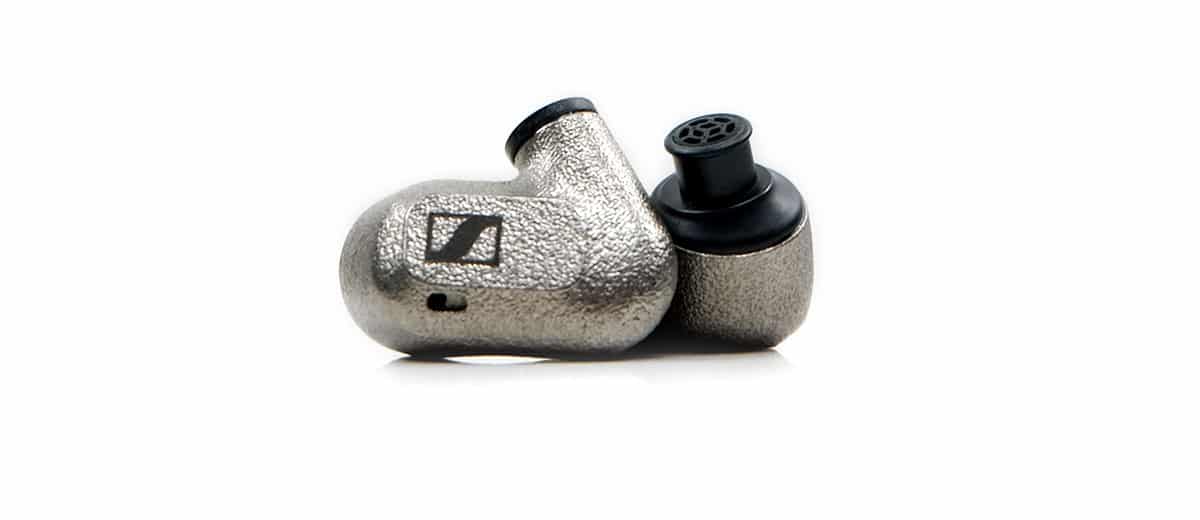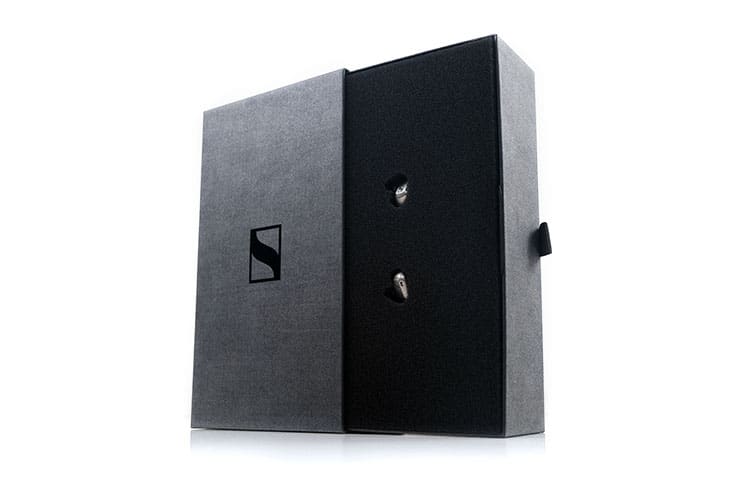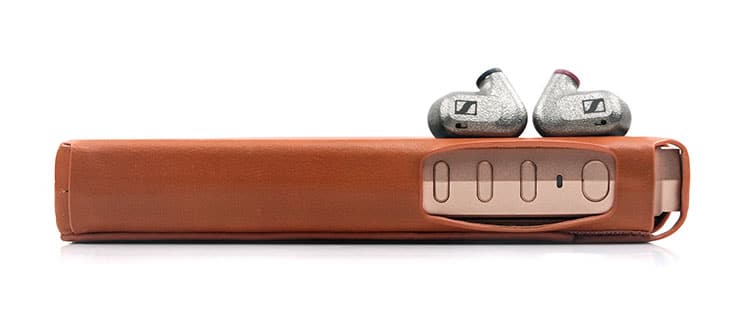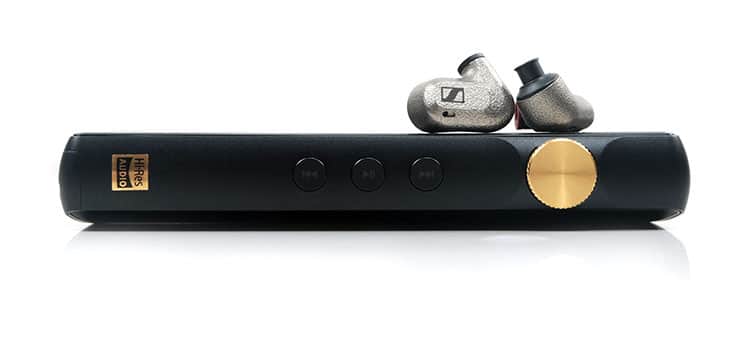Sound Impressions
Impressions were written using a Cayin N6ii/R01 motherboard as the source with the foam tips and the balanced 4.4mm cable selected for the IE 600.
Summary
If you are coming from the original IE 800 then the IE 600 is almost a complete rethink on how we might like to listen to our music and what aspects within the elements of music are most important to a wider range of users.
You will see me mention on page 3 in the detailed comparison of how the IE 800 represents maybe a classic way of thinking about monitor tuning with its very relaxed pinna gain to try and create a very large and somewhat ethereal staging quality.
The IE 600 is more of a nod to recent tuning trends that gravitate more toward the Harman Target curve but not necessarily slavishly following it. This is still very much Sennheiser’s unique tuning but with a stronger midrange focus to go along with some tasteful lifted sub-bass and a clean but not overtly pushed treble performance.
I would say this is a fairly balanced modern sound signature with a tonal quality that is relatively neutral to slightly smooth, especially with the foam tips. With the silicone tips, the IE 600 treble gets a bit of a lift and brightens up the mids which, for me, makes synergy a more studied process.
You will not need a huge amount of power to drive them either. Do I prefer it going balanced over SE though? Yes, the staging is a little more intimate than the IE 800 but it sounds more natural to my ear with a better arrangement of midrange instruments and vocals.
That being said, SE does not separate as well as balanced nor does it extend as well. The additional power from balanced outputs serves the IE 600 dynamic driver well in terms of dynamics and staging expanse.
Frequency Response
The IE 600 FR is notable for a stronger sub-bass bias over a mid-bass punch, a reasonable level of bass to mids separation, and a 1-3k rise for vocal prominence. Secondary to that is a muted 3-5k tuning and an elevated upper treble 7-10k presence.
The sub-bass bias is strongest up to 50Hz but drops in a fairly linear fashion to around 500Hz and into the lower mids, so it’s not a bass response with a lot of bloom or warmth bleeding into the mids.
That separation gives it that slightly stronger neutral coloration compared to IEMs such as the HIFIMAN RE2000 SE or the Vega 2020 from CA which are warmer and fuller sounding through the upper bass to lower mids.
The 1-3k rise is probably the most satisfying aspect of the IE 600’s tuning. It has a nice balance with the sub-bass bias but is not overly done in the sense that vocals never come across as in-your-face or shouty.
The key phrase here is that has some ‘tasteful focus’ on vocal presence stretching the staging and placing the instruments in and around in a supportive manner.
The treble is more upper than lower with a bit of s subdued curve through the upper mids to lower treble taking any potential for sharpness out of percussion and higher pitching vocal performance.
It is still a little dry as opposed to liquid sounding, especially with the silicone tips, but the extension and headroom are convincing.
The selection of tips will have an effect on that treble tuning also with the foam tips damping down on the energy from 5-10k by around 2-3dB giving it a slightly smoother and more forgiving sound signature.
Timbre
Overall, the IE 600 has an excellent balance and a level of coloration that is smooth to neutral with the foam tips and neutral to slightly sparkling with the silicone alternatives.
The balance though comes from a low-end that hits deep with classic dynamic driver texture and slower rates of decay but has a decent enough cut through the upper bass to not bleed all over those lifted mids and drown them out.
That means you get a proper and credible dynamic driver fundamental to lower pitching instruments but without distracting bloom and huge levels of warmth and softness that go along with it.
This is not a basshead fundamental, there are stronger dynamic driver IEMs if you want huge bass such as the Vega 2020. This is more about deft control and quality separation freeing up Sennheiser from having to amplify the mids too far forward to compensate and ending up sounding shouty in the process.
Through the mids, the coloration is a mix of natural warmth and an increasing harmonic influence from that upper treble sparkle. It is not quite as smooth and liquid sounding as some competing IEMs and there is some additional contrast also with the silicone tips.
Again, here is where I would pick the foam tips that deliver a beautiful tonal balance and help soften up the treble a bit more, and keep it in check with typically bright or high-energy audio mixes such as synthwave and percussion-heavy hard rock.
Staging & Dynamics
The IE 600 has a much-improved instrumental and vocal arrangement compared to their classic models. I would define it as more life-like in its positioning with excellent resolution though a shade more on the intimate side compared to the ethereal and more dispersed imaging of the likes of the IE 800.
Vocal imaging in particular benefits from that more natural 1-3k rise coming more front and center with instruments settling in just behind.
Some higher-pitching percussion work will image alongside vocals or slightly above if they are particularly energetic and you are using the silicone tips but not to the point where they are dominant.
Sub-bass presence is stronger than mid-bass though the punch is still pretty decent. The lower mids around 500Hz are probably the most dipped aspect of the imaging from the IE 600.
It does well with bass-to-mids separation but instruments hitting this region are a bit more contrasting with a good fundamental and not hugely forward in their positioning.
Going balanced will enhance the perceived level of instrumental and vocal separation and also bring in a bit more depth and air in the IE 600’s staging presentation.
SE is slightly softer and not quite as distinct in its arrangement but works quite well with the silicone tips if you want that more vibrant midrange performance and want to keep the treble in check a bit more.
Synergy
Efficiency
Compared to the original IE 800, the IE 600’s efficiency is relatively unchanged despite the former’s higher 125dB SPL benchmark.
It is definitely a lot more efficient than bigger dynamic driver models such as the HIFIMAN RE2000 SE but surprisingly, a lot less sensitive compared to the CA Vega 2020 10mm ALDC driver.
Rated at 18Ω and 118dB SPL the IE 600 is quite efficient on paper but compared to more sensitive multi-BA models such as the Vision Ears VE8 and the Andromeda 2020 it is going to need a little more juice volume-wise.
However, at the same time, it is less likely to suffer from potential impedance-skew or amplification hiss, and to be honest, a low gain setting on our tested DAPs was sufficient.
For example, paired with the DX320 using AMP13 both 3.5mm SE outputs from its tube amplification had very pleasing black backgrounds and very little in the way of detachable or distracting noise even with WiFi turned on. The HiBy R8 4.4mm PO output is not the lowest for hiss either but the IE 600 had no issues noticeable hiss either.
Tip Choices
Whilst ultimately this will be a personal preference choice there is no denying that it is a factor in the final sound signature output of the IE 600 beyond your source and amplification choice.
For me, the foams are the superior choice here if you are sensitive to harmonic dissonance or any treble overtones from that excitable upper treble region.
Whilst the IE 600 is not what I would describe as a sharp-sounding monitor per se the silicone tips tend to shine a light on that region if the audio mix is naturally bright, to begin with. That means a bit more timbral contrast and enhanced sibilance bleeding through.
They also require a little more shuffling to get a sweet spot for proper isolation and if not acquired can lower the bass shelf which in turn exacerbates the treble influence further brightening the mix.
The foam tips isolate a lot better and improve the seal which in turn enhances the bass body and warmth and softens the timbral quality in the process. The treble presence is also slightly diminished from 5k upwards which improves vocal smoothness creating a more relaxed performance.
Pairings
With the tip choices in mind, it’s probably prudent to say that despite the overall smoother tone of the foam variant, the IE 600 still has decent treble energy to go along with its improved vocal imaging over the IE 800.
With that in mind, I found myself gravitating to natural-sounding sources or those that are not overly lean or clinical-sounding. R2R DAPs and dongles such as the Cayin RU6 and the N6ii combined with the R01 motherboard as well as the RS6 paired really well with the IE 600. The AMP13 tube card with the DX320 was also a standout pairing.
The performance is not uniform between those choices. For example, I much preferred the right-sided hybrid output of the AMP13 compared to the more eloquent SETA-type performance of the pure tube left output.
The low-end registered a stronger impact and the lower mids and vocals sounded richer and denser whereas the left-sided input felt anemic and more dispersed through the mids despite its smoother tone.
The RU6 had the smoothest vocal timbre of all the choices but the low-end was a little on the softer side for dynamics or impact. For a stronger and tighter bass performance from the IE 600, you need to switch to the N6ii and the R01 motherboard.
The HiBy RS6 also produced a weightier response with the IE 600 with the creamiest midrange performance but didn’t quite have the best separation and air compared to the N6ii.
Out of the two delta-sigma DAPs I tested, the DX240 and the HiBy R8 I would pick the smother-sounding R8. The DX240 is excellent for detail but perhaps a bit too dry for the coloration match. The IE 600 sounded smoother paired with the R8 and with some additional low-end weight to go along with it.




